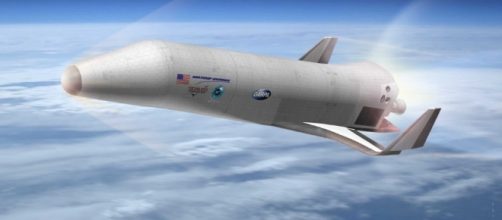The U.S. Defense Advanced Research Projects Agency announced on Wednesday, May 24, that it would partner with Boeing and invest $146 million for building an experimental spaceplane. The spaceplane will be used to deliver small satellites into orbit on a daily basis. The main mission would be to create a reusable first stage which would be able to haul midsized payloads to the Earth’s orbit and then come back and land safely for a similar launch the very next day.
Boeing will now help build the “Phantom Express” for the phase 2 and phase 3 of DARPA’s Experimental Spaceplane 1 or XS-1 initiative.
Both sides involved would look to ultimately achieve building a spacecraft which could launch 10 times in 10 consecutive days. Phase 2 will take place throughout 2019 and will involve building the XS-1 and also ground testing it. Phase 3, on the other hand, will involve at least 12 to 15 test flights in 2020.
DARPA and Boeing partnership
The current collaboration will be a public-private partnership among the two parties, which means that Boeing too will financially contribute toward building the spaceplane. However, Boeing spokesperson did not reveal exactly how much the firm would contribute toward the project. It was revealed however that the company was fully committed to finding a solution to the problem, which would make space access cheaper and hassle free.
The Phantom Express vehicle will take off vertically and carry the satellite payload on top of the fuselage. Once it delivers the satellite carrying upper stage into orbit, the lower stage will make a smooth landing on the runway. Darry Davis, the president of Boeing Phantom Works, said in a statement that the Phantom Express would revolutionize satellite launches and would make them relatively cheaper and risk-free.
DARPA’s XS-1 program
The Department of Defense subsidiary, DARPA, announced its XS-1 program back in 2013 in a bid to reduce launch costs. The department wanted to create a spacecraft which would be able to haul 4,800 pound heavy satellites at costs lesser than $50 million. The name “spaceplane” was specifically decided upon due to the vehicle's ability to perform aircraft like operations.
It is known that during the phase 2 ground tests, the XS-1 will fire up the engine 10 times in as many days, which would prove its ability to launch 10 satellites one after the other in consecutive days. At first, the speeds will be limited to Mach 5 but, later tests would be conducted using speeds of around Mach 10. In at least one of these Phase 3 tests, the spaceplane will place a dummy payload into orbit to ensure its capabilities.


